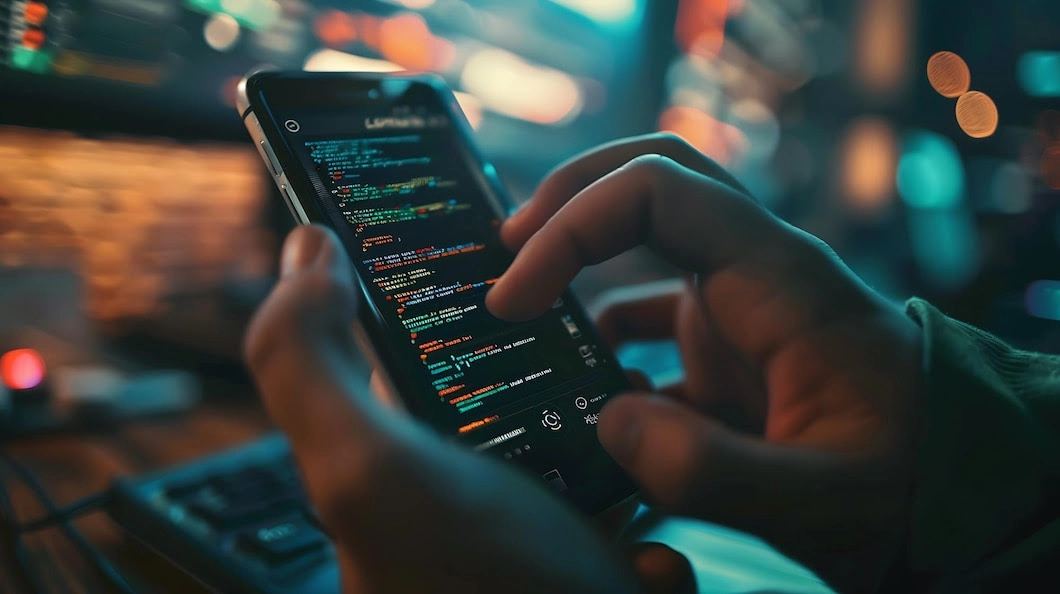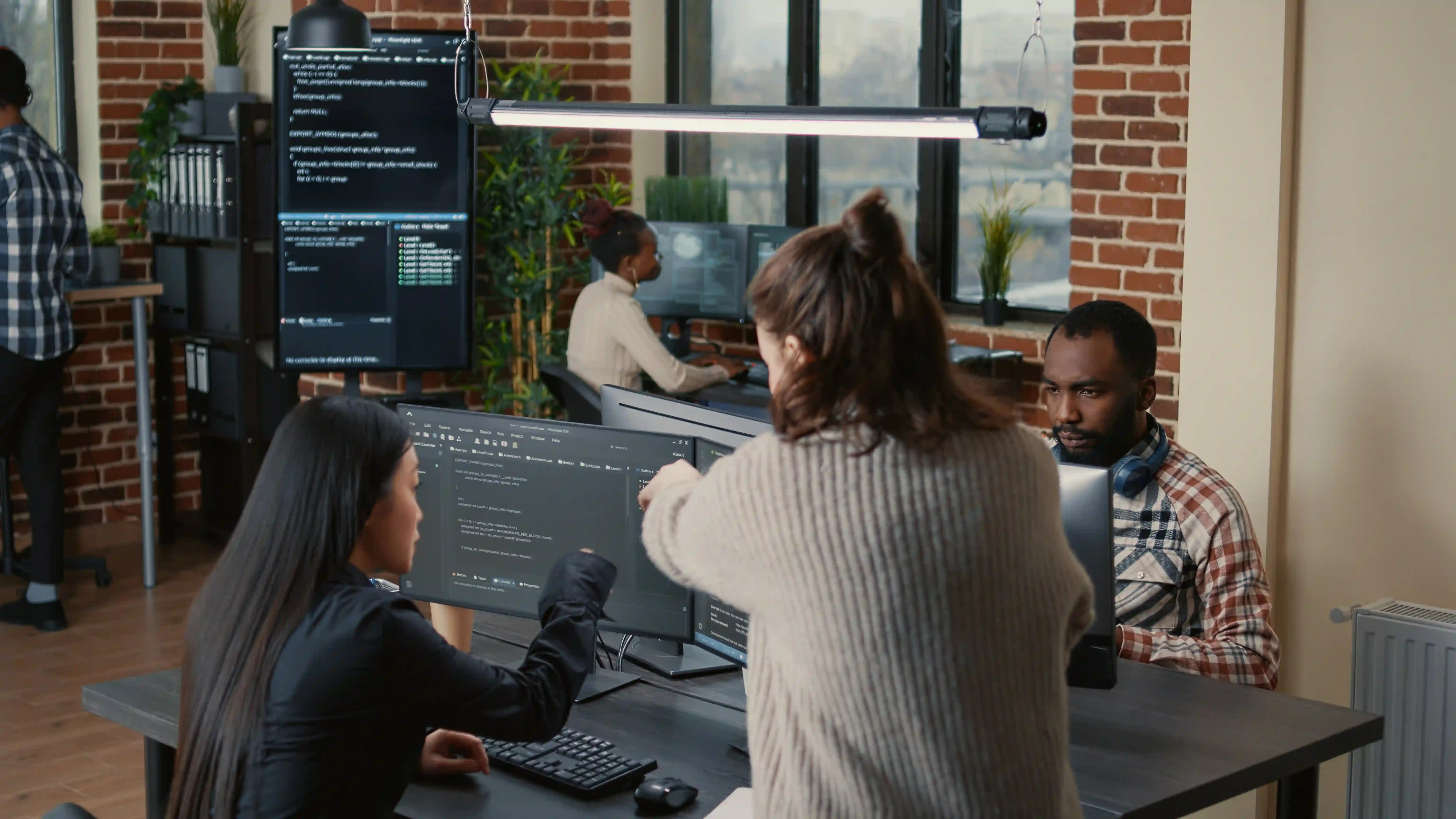Mobile Application
We specialize in crafting user-centric applications that not only meet your business objectives but also deliver exceptional value to your users. From stunning iOS apps to robust Android solutions, our team is equipped to handle diverse app development needs, including hybrid, wearable, and IoT applications. Let us turn your app idea into a successful reality with innovative designs, cutting-edge technology, and a focus on scalability.
iOS App Development
We specialize in building intuitive and high-performance iOS applications, ensuring seamless integration with the Apple ecosystem. Our apps deliver a superior user experience and engagement.
Android App Development
Our Android app development solutions are designed to cater to a broad user base. We focus on creating scalable and flexible apps that provide a consistent experience across various devices.

Hybrid App Development
We develop hybrid applications that combine the best of both worlds, offering the performance of native apps while ensuring cost-effectiveness and faster time-to-market.
Wearable App Development
Our wearable app development services provide innovative solutions for smartwatches and fitness trackers, empowering users with real-time insights and enhanced convenience.
Cross-Platform App Development
Our expert team utilizes the latest technologies to ensure your app reaches a wider audience, reduces development costs, and maintains a consistent user experience.
Custom Software
Our Custom Software Development services are designed to address the specific needs of your business, ensuring you get the most out of technology. We specialize in building scalable, secure, and high-performance applications that are aligned with your business goals. Whether you need a web app to streamline your operations, a desktop solution for enhanced productivity, or a cloud-based system for improved data management, we have the expertise to deliver.
Web App Development
Our web app development focuses on building responsive and scalable applications, helping you streamline operations and enhance your online presence.
Desktop App Development
We develop high-performance desktop apps that integrate seamlessly into your existing systems, boosting productivity and efficiency.

MVP Development
Our MVP development services allow you to validate your product idea with a functional prototype, accelerating time to market and minimizing risk.
IoT App Development
Leverage the power of IoT with our custom app development. We build intelligent IoT applications that enable seamless connectivity, automation, and improved decision-making for your business.
Blockchain App Development
Our blockchain app development brings transparency and security to your transactions, revolutionizing the way your business handles data and trust.
AI Implementation
Implement the power of artificial intelligence with Hudasoft’s advanced AI solutions. From streamlining processes to enhancing decision-making, our AI implementation services are designed to integrate seamlessly into your operations, driving innovation and efficiency.
Machine Learning
Our machine learning solutions help you analyze vast amounts of data, uncover hidden insights, and make predictive decisions to stay ahead in your industry.
AI Implementation
With our AI implementation services, we integrate intelligent systems into your workflows, automating processes and optimizing operations for better efficiency.

Business Process Automation
Our business process automation services streamline repetitive tasks, reducing errors and improving efficiency, so your team can focus on high-impact activities.
AI Chatbot
Our AI chatbot solutions enhance customer interactions, providing 24/7 support, automating responses, and improving overall user experience.
AR/VR App Development
We develop AR/VR applications that transform user engagement, offering immersive experiences that drive innovation in training, marketing, and product development.
ERP Customization
Hudasoft specializes in customizing ERP systems to streamline processes, improve resource management, and enhance decision-making. Our tailored solutions integrate smoothly into your existing workflows, boosting efficiency and scalability.
Integration Industry Solutions
Maximize your operational potential with our platform-agnostic solutions. Whether you’re integrating ERP systems, eCommerce platforms, CRM tools, or custom applications, our expertise ensures smooth, efficient connections that boost productivity and data accuracy.
Tailored D365 Solutions
We offer customized Microsoft Dynamics 365 (D365) solutions that integrate AI to automate processes, improve customer relationships, and optimize business operations, driving efficiency and real-time insights across your organization.
Digital Transformation
Embrace the future of business with our Digital Transformation services, designed to revolutionize the way you operate, engage, and grow. In a rapidly evolving digital landscape, it’s essential to stay ahead with innovative solutions that enhance efficiency and create new opportunities. Our expertise helps to unlock new insights and intelligent decision-making capabilities.
Dynamics 365 Development
Our Dynamics 365 development customizes solutions to meet your business needs, optimizing CRM and ERP capabilities for improved performance and growth.
Cloud Development & Integration
We offer cloud development and integration solutions that enhance scalability and collaboration, enabling your business to stay agile and competitive.

Workflow Automation
Our solutions enable seamless collaboration across teams, ensuring that tasks are completed swiftly and accurately. Discover the power of automation and transform the way you work!
Ecommerce App
Unlock the full potential of online shopping with our Ecommerce App Development services. We specialize in building tailored ecommerce platforms that are scalable, secure, and optimized for user engagement. Whether you're looking to build a new store from scratch or enhance your existing online presence, our team ensures seamless functionality and outstanding user experience across all devices.
Ecommerce Development
Our expertise spans various facets of e-commerce development, ensuring efficient online shopping experience for both businesses and their customers.
Shopify App Development
Our Shopify app development services deliver tailored features and functionalities that enhance your store's performance, helping you meet the unique needs of your customers.

Shopify Store Development
We build scalable and highly customizable Shopify stores, ensuring they are optimized for user experience, speed, and security to drive online growth.
Staff Augmentation
Planning to venture into a new domain but do not have the expertise in-house? No worries! Onboard the talent through staff augmentation and set foot on the journey to success. On boarding augmented resources is much swifter than attracting, headhunting, engaging, and recruiting in-house talent.

Hire Dedicated Developers
Access a team of skilled developers tailored to your project needs without the hassle of recruitment. Whether you need short-term support or long-term collaboration, our dedicated developers seamlessly integrate with your existing teams.

























